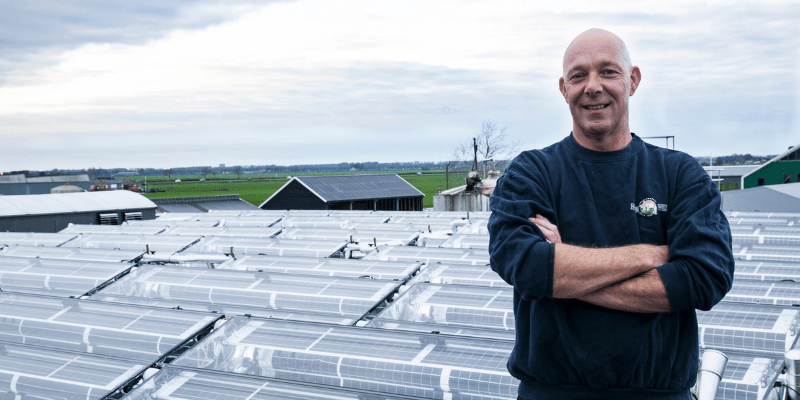CO2 performance ladder
Within the management team, the Quality, Health & Safety and Environment (KAM) manager is responsible for the Energy Management System (EMS). The KAM manager ensures the establishment of an energy management team whose task is to create an EMS that influences the continuous improvement (read: reduction) of unit energy consumption through the deming circle.

Energy policy
To improve energy use, the following will be considered:
- The EMS will be set up and maintained;
- Time and money will be made available to carry out the tasks for the EMS;
- The scope will be periodically reviewed and checked for validity;
- The importance of the EMS will be made known to all employees through notice in Insite;
- Roles, responsibilities and authority will be defined;
- KPIs will be appropriate for the company's departments;
- Long-term energy performance will be assessed;
- Energy consumption and reduction will be measured periodically;
- All issues will be included in a board review or management review.
CO₂ footprint
The CO₂ footprint in 2024 for the Heerenveen site was 3266 tonnes of CO₂.
The CO₂ footprint in 2024 for the Katwoude site was 766 tonnes of CO₂.
The CO₂ footprint in 2023 for the Katwoude site's own livestock farm was 787 tonnes of CO₂.
Energy and CO₂ reduction results 2024
We have had an active policy to reduce energy consumption at all our sites for more than 10 years. In 2024, our measures led to the following results, among others:
- We generated over 350,000 kWh of solar energy in Katwoude, saving 168 tonnes of CO₂ (scope 2);
- We generated over 380,000 kWh of solar energy in Heerenveen, saving 208 tonnes of CO₂ (scope 2);
- We used European green energy in all Dutch locations (scope 2);
- In our vehicle fleet, 75% of the company cars are electric. When cars are replaced, we switch to electric (scope 1);
- At the Katwoude location, the pressure of the steam boiler is lowered at night (scope 2);
- At the Heerenveen location, the heating of the loading pit has been switched off permanently; it is now switched on manually in the event of frost. Previously, it switched on automatically at 4 °C (scope 2);
- In Heerenveen location, the sensor of the condensate cooler has been moved, saving energy (scope 2);
- An all-electric feed robot has been taken into use at the Livestock Farm, saving 3.5 tonnes of CO₂ (scope 1);
- In Heerenveen location, 7 fans in the cheese dairy on the roof were replaced, saving 0.8 tonnes of CO₂ (scope 2);
- Location Heerenveen has saved 9% CO₂ per kilogram of cheese in 2024 compared to 2020.
- Location Katwoude has saved 24% CO₂ per kilogram of cheese in 2024 compared to 2020.
Activities energy and CO₂ reduction 2025
- We complete a feasibility study into wind turbines in Heerenveen;
- We will commission a thermal imaging camera at the Katwoude and Heerenveen production sites to identify savings opportunities;
- We will take an electricity meter into use at the Katwoude and Heerenveen production sites to identify potential savings;
- We are commissioning a flow meter at the Katwoude and Heerenveen production sites to identify savings opportunities;
- We downsize 2 circulation pumps in the ice water installation in Heerenveen, the expected saving is 28 tonnes of CO₂ (scope 2);
- We are replacing the steam lock of evaporator with compressed air at the Heerenveen location, the expected saving in CO₂ is 75% at this location (scope 2);
- We will install additional solar panels on the roof of the Heerenveen location, which is expected to yield a reduction of 139 tonnes of CO₂ (scope 2);
- Light sensors will be installed in the remaining rooms at the head office in Katwoude (scope 2);
- An Energy Coordinator has been appointed to identify where energy can be saved.
Energy and CO₂ reduction targets in the short term
Cheese factories: 10% less CO₂ emissions per kilogram of cheese in 2030 than in 2020.
Long-term energy and CO₂ reduction targets
The production facilities in Katwoude and Heerenveen will be CO₂ neutral by 2050.
Participation in initiatives
We participate in the masterclass CO₂ reduction measures organised by the NVPI together with the RVO. More substantive information can be found on the SKAO website.


